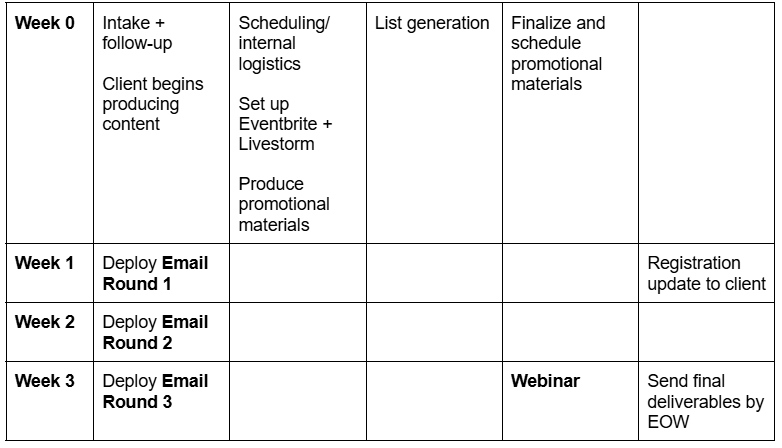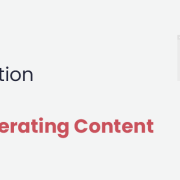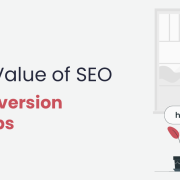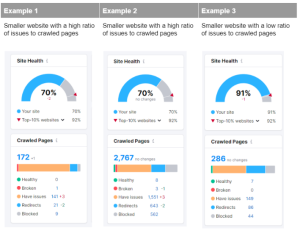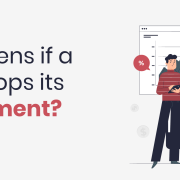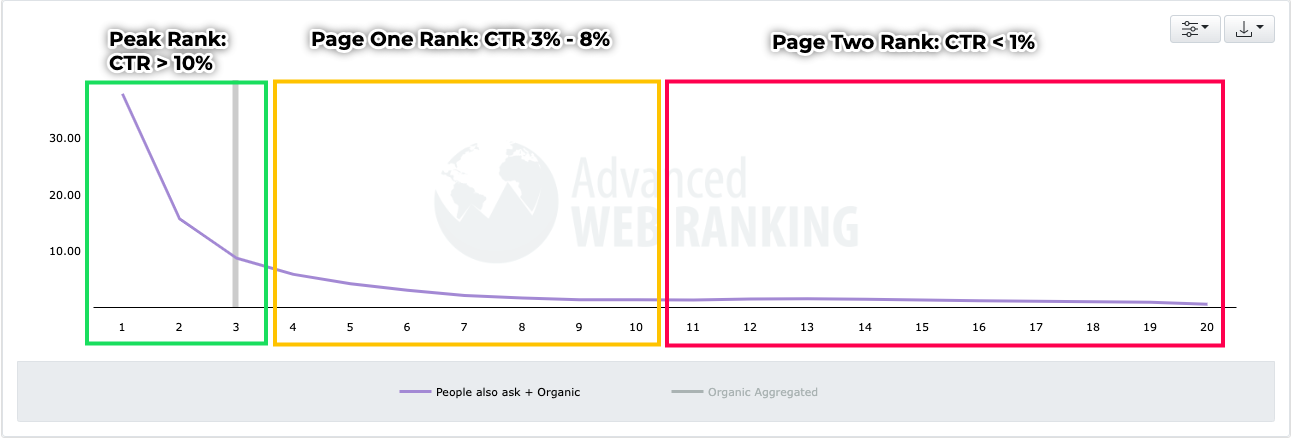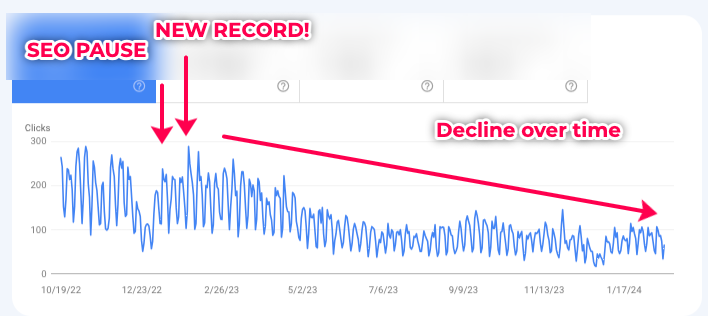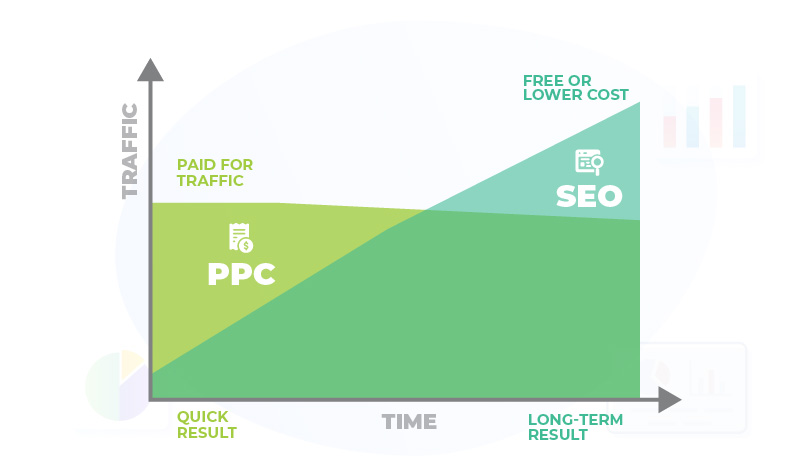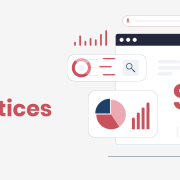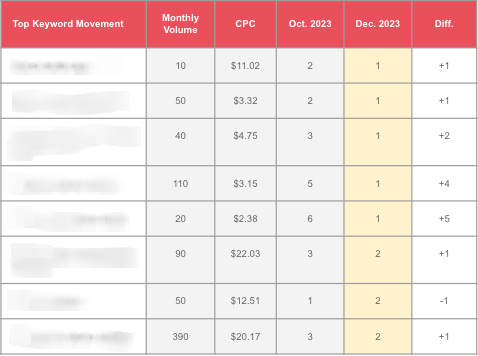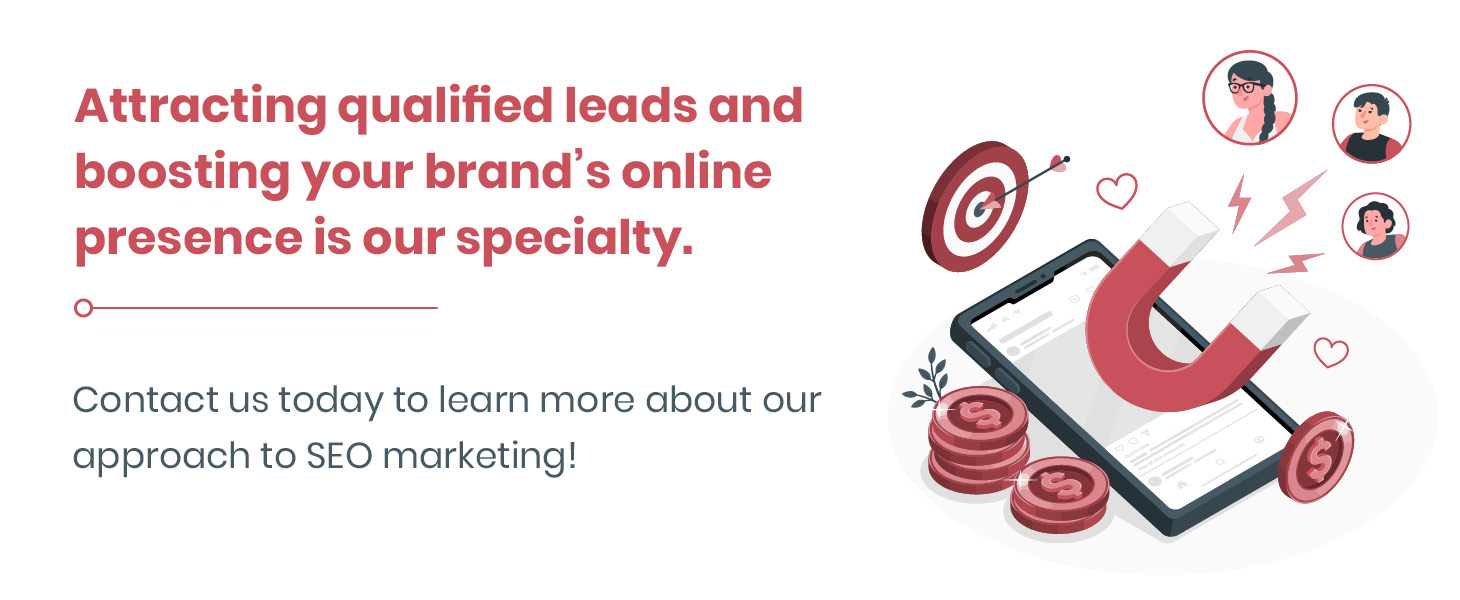Your website’s content ultimately determines your success with SEO and organic lead generation.
Don’t get us wrong—big-picture strategy, reporting, and your site’s technical health are all critically important, too. But they’re not so useful for an empty website!
Many brands struggle to create high-quality, SEO-optimized content (rooted in current SEO best practices) that attracts the right audiences. That’s understandable.
After all, consistently creating effective content is tricky, requiring sizable time commitments and a nuanced understanding of what web users want.
We get a ton of questions from clients and partners about our content creation process. So let’s pull back the curtain.
In this guide, we’ll walk through our process for creating lead-generating onsite content that grabs more attention for our clients’ brands.

Content Creation: Quick Context
Why is content so critical? What defines “quality” content these days?
Let’s quickly review this essential context before diving into the content creation process:
Why is content creation so important?
An old SEO truism, “Content is king,” still holds true even as the industry has undergone massive changes over the years.
The optimized content on your website, including your homepage, blog posts, and key product/service pages, act as the focal points of your SEO strategy.
Think of it this way—the intended outcomes of an SEO strategy are to:
- Help your website rise in rankings on search engines so that you can…
- Attract more traffic to your website in order to…
- Convert visitors into marketing- and sales-qualified leads for your business
Your content is what ranks. The quality of that content ensures visitors who click through will choose to stay on your website. The strategies employed within the content (its subject matter, structure, graphics, and calls-to-action) convert those qualified visitors into secured leads.
It all comes back to the content.
Once you create high-quality, optimized content that can outperform other pages, you can then bolster its visibility and prove its helpfulness to search engines through various offsite activities and regular improvement.
What is “high-quality” content today?
It’s not enough to simply draft and publish content with relevant keywords. The quality and embedded strategies of your pages and blog posts play critical roles in how well they perform.
For context, SEO today is a lot more holistic and complex than it used to be. You may remember the old frontier days of SEO, when a basic page stuffed with dozens of mentions of unnatural keywords could easily appear as the first result for your search.
Now, Google and other search engines use an extremely wide range of direct and indirect signals to gauge the quality, reputability, and helpfulness of content. These systems have become sophisticated at ‘understanding’ the content, too, powering the rapid rise of generative AI in search engines.
See our writeup on Google’s AI Overviews and our take on what SEO means in an AI environment to learn more.
So what do these advancements mean? To succeed and secure visibility, content has to do much heavier lifting than it did just a few years ago.
In the playbook below, we’ll outline all the embedded strategies and elements that drive SEO success.
Heads up that there are quite a lot—follow along and don’t hesitate to reach out to our team if you have any questions.
SEO Content Creation for Mission-Driven Brands: The Playbook
At a glance, here’s the complete process for creating high-quality, optimized SEO content:
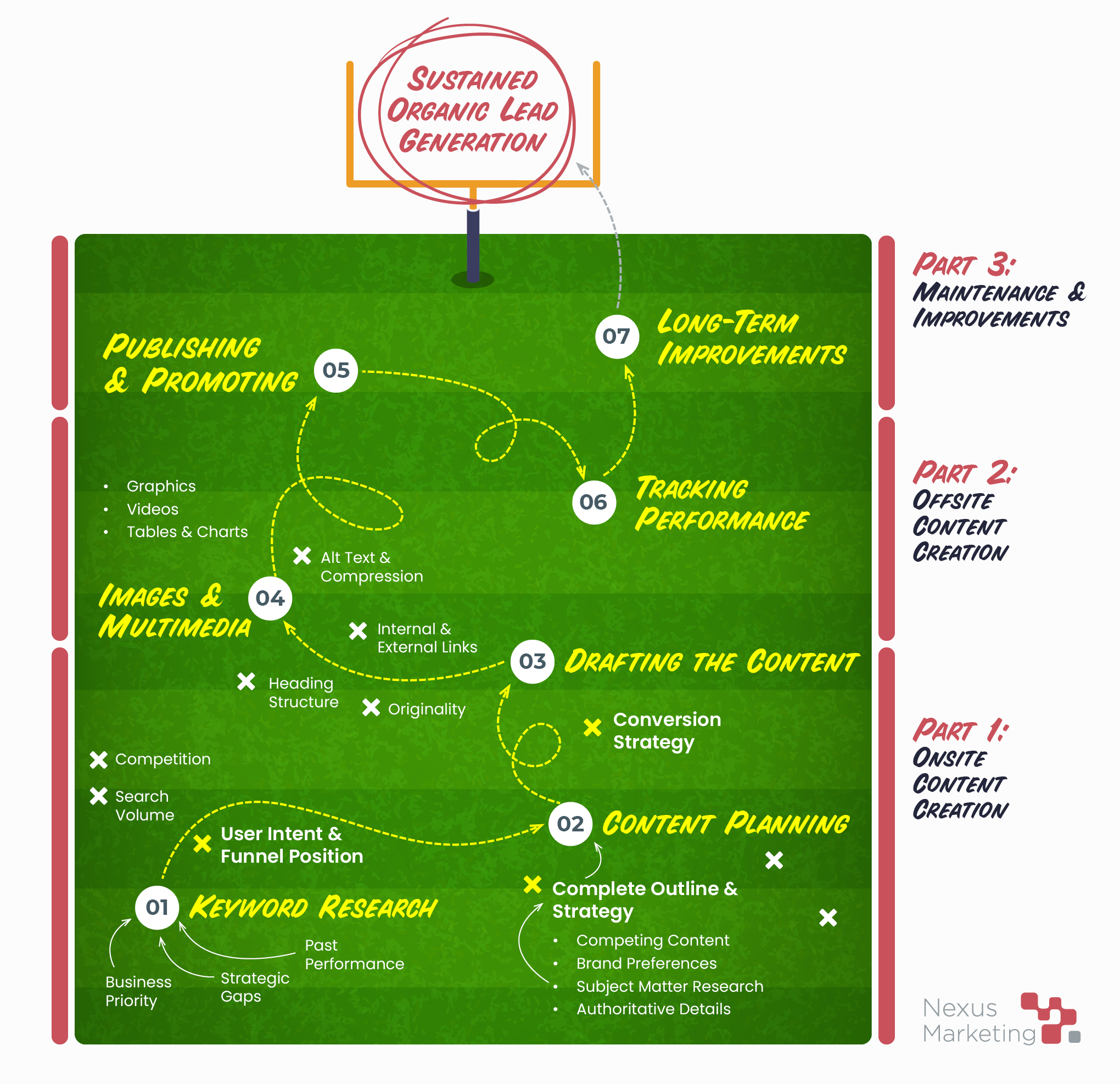
This process consists of seven key steps:
- Keyword research
- Content planning
- Drafting the content
- Images and multimedia
- Publishing and promoting
- Tracking performance
- Long-term improvements
Note that the last three stages are not directly part of the onsite content creation process.
We’ll briefly review them here, but please refer to our other blog posts about the importance of promoting, tracking, and improving your content over time.
1. Keyword Cluster Research
The content creation process starts with a core topic or target keyword. The content’s structure and strategy will revolve around it and related keywords, together called a keyword cluster, resulting in a page that will be positioned to rank for all of them.
Choosing keywords can be tricky business since there are several potential factors that can come into play. These are among the most prominent factors that you may consider when choosing keywords for content:
Business Priority
- Relevance to your brand’s current or upcoming priorities, for instance, if you’ll be launching a product or service line soon and want to establish early visibility
Strategic Gaps
- Gaps in your current SEO strategy, like keywords that your competitors currently dominate or topical gaps in your content library that will give you a fuller online presence if pursued
Past Performance
- Keywords based on trends you’ve seen in your SEO performance, like if you’ve slipped in rankings for a certain keyword and want to reclaim visibility
For SEO newcomers, you likely already have a primary target keyword in mind based on your brand’s priorities.
However, you want to maximize the visibility of your content by ranking for multiple variant keywords. Plus, SEO pros increasingly talk about the importance of targeting topics through a cluster approach in order to stand out to today’s advanced algorithms. This contrasts with the old-school approach of choosing one very specific keyword, a couple of secondary keywords, and then filling the content with them.
Today, we recommend being more organic or holistic in how you think about keywords.
Consider the full range of questions and subtopics that someone may have about your core topic. Think through the related concepts that someone at that stage in the buying journey may be interested in. Below we explain how to refine your cluster of keywords and how the buying journey stage or user intent should inform your strategy.
Refining Your Keyword Strategy
Using specialized keyword research tools, client input, and we weigh a few different factors when fleshing out a complete keyword strategy. These include:
- Search volume: The estimated number of monthly searches a query receives
- Competitiveness: Roughly gauged using search volume and the strength of the websites currently ranking well for a query
- Related keywords and topics: Supplementary and secondary keywords that will expand your visibility and relevance, gathered from the search engine and keyword research tools
- Any existing rankings: Checking for any related keywords the website already ranks for to avoid strategic overlap that will reduce overall performance
- Client preferences: Any specific terminology or strategic preferences that should be taken into account
After considering these elements, you may adjust your primary keyword slightly and add a handful of related secondary keywords to your strategy. These extra keywords are quite helpful; they expand your content’s reach and demonstrate topical relevance to search engines. The goal is to strike the right balance of business relevance/priority, volume, and achievability.
Consider Funnel Position and User Intent
Now, think about the funnel position and user intent of your primary target keyword.
Is it broadly educational, near the top of the sales funnel? Is it specifically about a product or service, near the bottom of the funnel? Somewhere in between?
Don’t overthink this step. Simply ask, “What does someone want to accomplish when they search this keyword?”
Check out the content that search engines already rank highly for the keyword. Are these pages short, long, education-focused, conversion-focused? How comprehensive or how concise are they?
The funnel position of a keyword and the user intent behind it shape the ultimate form of the content. Your content needs to match the user intent in order to succeed.
Here are a few examples:
| Keyword | Funnel Position | User Intent | Content Should Be: |
|---|
| School fundraising | Top | Informational | Comprehensive, full of related tips and resources |
| How to plan a school fundraising campaign | Middle | Informational (with more specific intent) | Helpful, direct, and as long as necessary to satisfy user intent |
| School fundraising consulting | Bottom | Commercial | Concise, structured to quickly address user pain points and needs |
Thinking about funnel position and user intent now will pay dividends in the next steps. By ensuring that your content outline and draft align with what users and search engines expect of it, you’ll be better positioned to rank.
Pro tip for your keyword cluster strategy: Have a well-rounded strategy.
Many brands new to SEO want to focus solely on top-funnel keywords (with higher search volumes) or bottom-funnel keywords (that are more likely to generate leads). Don’t discount the middle-funnel stage!
Bottom-funnel keywords can be extremely competitive, and the search results for top-funnel keywords are easily eaten up by AI-generated answers these days. Middle-funnel keywords help you build greater topical authority and more smoothly funnel visitors towards eventually converting.
2. Content Planning
Once you’ve determined your keywords, it’s time to plan your content around them.
You’ll need to gather information from a variety of sources and synthesize them into a comprehensive content plan and outline. When you’re done, you’ll have a complete roadmap for your content—making the drafting process much easier.
So what should you gather? This information will cover your bases:
- The keyword strategy, including related/secondary keywords
- The funnel position, user intent, and audience for the keywords
- The top pages that Google already serves for these keywords
- Any specific client preferences or input already received
- Existing content on the website that ranks for any of the keywords
- In-depth subject matter details
Researching the subject matter is particularly important. Of course, you want (and need) your content to be accurate and helpful. But it also has to stand out.
Use Google, your brand’s own internal resources, authoritative industry new sources, and more to gather:
- Relevant talking points, best practices, and examples
- Recent relevant trends that will resonate with the audience
- Authoritative statistics to support your claims and convey trustworthiness
Outlining Your Content
With all this information, you should then have what you need to create a complete content outline. What should it include, and how detailed should it be?
First, high-quality SEO content uses clear heading structures. A logical order of H2 headings for main sections and H3 headings for subtopics not only provides users with a better experience but also allows search engines to more easily understand what your content is about (essential for ranking).
Structure your outline using a topic-subtopic structure, noting the specific headings you’ll use to create logical flow. Fill as much detail as you want (the more the better!) to streamline the drafting process later.
Here’s a rough example:
Title/H1:
- Introduction
- H2: First Main Section
- Talking points, details, statistics to include, etc.
- H3: Distinct Subtopic
- H2: Second Main Section
- Talking points
- H3: Distinct Subtopic
- H3: Distinct Subtopic
- H2: Conclusion Section
Remember, the length and structure of your outline should align with the keyword’s user intent. There’s a basic rule of thumb you can follow:
If you’re targeting a top-funnel, educational keyword, go long. Think through the key information that users want to learn, relevant subtopics and contextual information, and a logical flow that will keep readers engaged.
For lower-funnel content with more commercial or transactional intent, go short. Determine what someone wants to accomplish by searching this keyword and give it to them directly, without extra fluff or unnecessary sections.
Creating Your Conversion Strategy
During this stage, you should also think through how you’ll encourage readers to convert, i.e. take a specific next action that brings them closer to making a purchase.
For a deep dive into conversion optimization and strategy, how to write your calls-to-action, and more, check out our complete guide.
For the purposes of fleshing out your content plan, here’s a quick template our content developed to define a conversion strategy:
- Target conversion action:
- Target landing page:
- Target audience:
- Who is searching this keyword?
- Why are they searching this keyword?
- Key message/value proposition:
- What is the reader looking to accomplish and why?
- Why is the client/the client’s expertise the best choice?
Explore the Full Template
We’ve only scratched the surface and could keep going on listing all the elements that a truly comprehensive content plan should include.
If you want to see everything our team considers when planning content, feel free to explore (or steal) our content plan template:
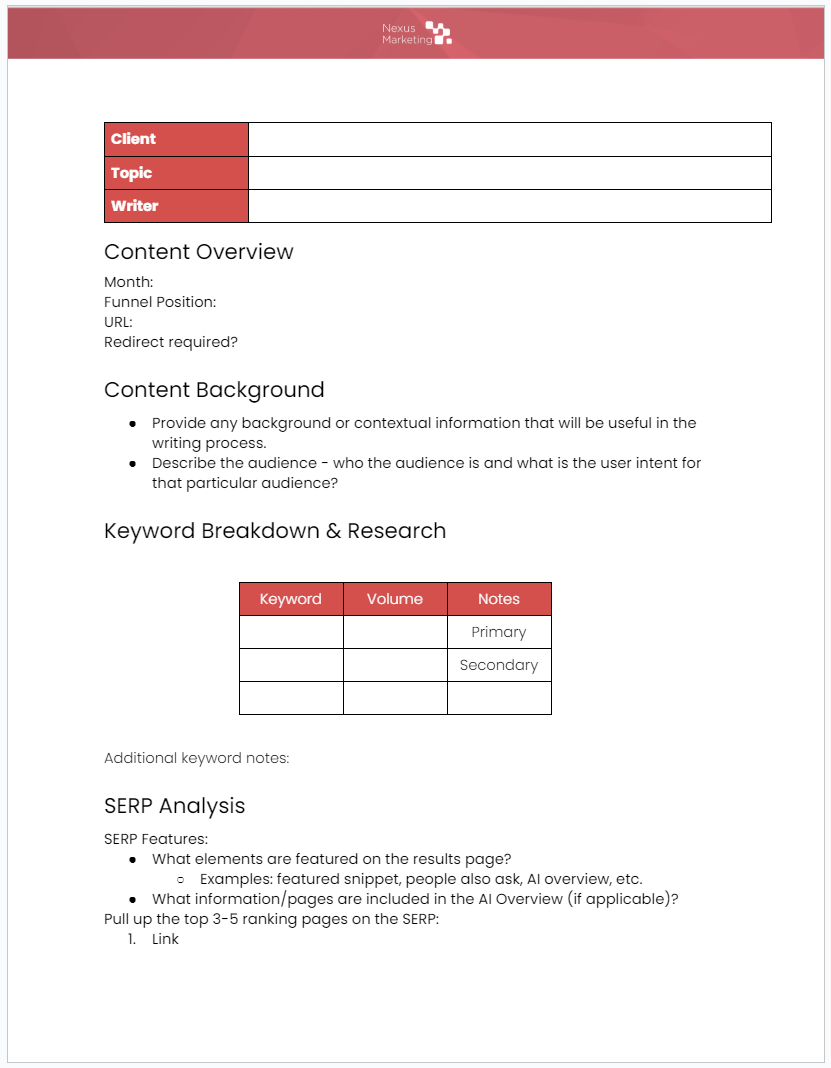
Our top tip: Take your time with the content planning process.
A thorough plan that combines user intent insights, subject matter research, conversion strategy, and more will be immensely helpful when you sit down to write. It also ensures that you’ll produce the best possible content to compete for your target keywords.
3: Drafting Your Content
Now comes the fun part—or at least our copywriters think so! It’s time to bring your content plan to life by drafting your content as a blog post or page on your website.
There are a few essentials to keep in mind as you write:
- Keep the user intent in mind. Actively think about what users expect and need from your content after finding it by searching a specific keyword. Avoid over- or under-explaining key points in your content depending on the user’s assumed level of familiarity. If the keyword cluster calls for a concise, bottom-funnel approach, you’ll likely need to create a well-designed product or service page with tight, keyword-rich copy.
- Be original. What unique expertise or perspective can your brand bring to the content? Originality is increasingly important for SEO success, and it’s something our team has been focusing heavily on over the past year. You can incorporate originality in all kinds of ways:
- Taking a specific stance or position on an open question or controversy related to the topic
- Including plenty of statistics, expert quotes, and your own analysis of them
- Adding real-life examples from your work and case studies
- Don’t forget the links. Including links in your content, both internal links to other pages on your site and external links to third-party sources, brings important benefits. Internal linking is hugely beneficial for both SEO and conversions, as it not only shows Google how your content is all related but also encourages more users to stick around and move down your sales funnel. External links to reputable sources convey trustworthiness to users and Google alike.
- Use a clear heading structure. As mentioned above, structuring your content with a logical H1-H2-H3 structure makes it easier for Google to understand what it’s about. Clearly labeled sections in an easy-to-follow order also provide a vastly better user experience than large chunks of text.
Short on time? Not a fan of writing for hours?
Drafting your content is where the rubber really hits the road. A marketing team might have a firm grasp on SEO best practices but lack the time to actually implement them in new content.
Creating high-quality content takes time, and while AI can help, you won’t see great results with a website full of AI copy. Nexus Marketing specializes in content creation for the mission-driven sector, and our content team has years of experience writing great content (and quickly) for brands like yours.
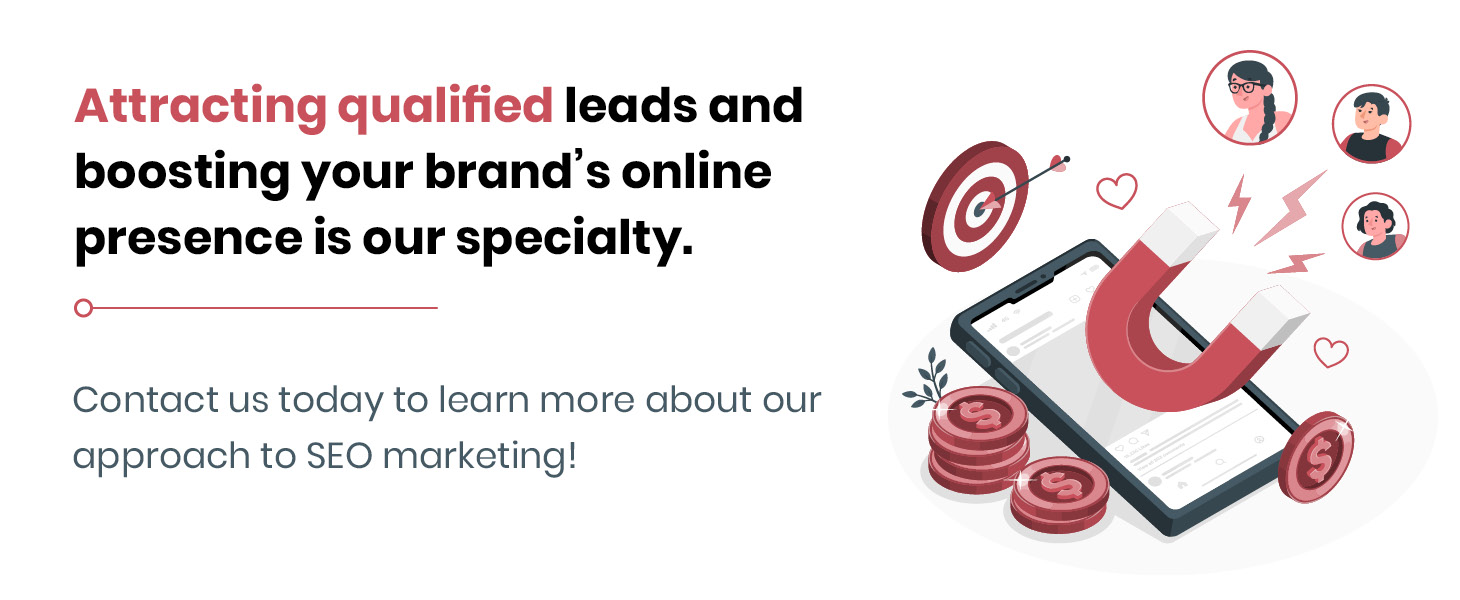
4. Images and Multimedia
With a complete draft of your new content, you can now turn to the finishing touches—adding engaging images and multimedia.
Images, videos, tables, embedded elements, and more can significantly benefit your content.
Not only are they more engaging for users, keeping them on your page for longer (and making them more likely to click around your website), but they also show search engines that you’ve put effort into creating helpful, high-quality content. A recent study of Google ranking factors by Semrush found a surprisingly strong correlation between top rankings and the number of images from across the whole domain that appear in image results.
Images and multimedia also give you one more place to demonstrate topical relevance, as search engines can read the alt text added to elements and (for some image formats, like .svg, and .webp) even the text in the images themselves.
For this step, our copywriters conceptualize images for the content and collaborate with our graphic design team to create them. A few key points to keep in mind for your own process:
- Don’t be afraid to occasionally reuse relevant evergreen images you’ve already created.
- Give your images alt text (a short written explanation of what the image conveys) to boost accessibility and signal increased relevance to Google.
- Compress your images files to reduce their total size and help prevent your site’s load time from lagging.
- Include your logo on high-value images that illustrate processes or key talking points.
- Stumped on what kind of images to create? Check out what the competition is doing, or try a quick Google images search to get the creative juices flowing.
- If your content includes statistics, you might easily create tables, charts, and graphs to illustrate them and create a more engaging experience.
Marketing professionals increasingly turn to video as an ideal medium for conveying ideas, engaging users, and expanding reach.
You can embed relevant videos from YouTube or Vimeo directly in your content, but for the greatest long-term value, you should ideally create custom branded videos. Check out this overview of the benefits of video and our production services:
Short video explanations of key concepts or processes, engaging walkthroughs of your services, video case studies, and more will engage audiences and offer continued value as you reuse them across multiple pages and channels. Learn more about common types of B2B videos here.
Want custom videos but don’t know where to start? Need support with your graphic design process?
The Nexus Marketing team can help! Get in touch and tell us a bit about your needs.
5. Publishing and Promoting
In the last stages of the content creation process, we check a few more tasks off our list:
- Proofreading the completed content
- Peer edits of the content, including images and multimedia, to check for mistakes, technical issues, and improvements
- Client edits on the full draft
- Preparing to publish
The content publishing process can be a little more complex than you might assume. This is when we consider who will be attributed as the author of the content, the content’s publish date, and any logistical considerations involving URL redirects.
Each of these elements can play important roles in the future performance of the content. Google increasingly seeks to connect quality content and reputation to real names in the industry or subject matter area.
If you’re updating or completely overhauling older content, you should pay extra attention to the publish date, which signals freshness and relevance, and the URL. A page’s URL very directly shows search engines what the page is about, so you should optimize it for your target keyword and ensure that there’s not already content on the domain with that URL. If needed, implement (and double-check!) a redirect from an older URL to the newly-optimized one.
From here, you should be ready to hit Publish!
Bask in the glow of your shiny new content live on your site, and give it all a last review to check for any technical or formatting issues.
Pro Tip: After publishing new content, the Nexus team always takes one last manual step of requesting that it be indexed by Google.
Content is indexed when it’s crawled by Google for the first time, and it’s not an automatic process. Indexing usually doesn’t take long for healthy website (a few days at most), but by manually requesting indexing, you speed up the ranking process to start seeing results even sooner. Do this in the URL Inspection Tool in Google Search Console.
Promoting Your Content
Once new content is live, many brands then actively promote it.
Why? Promotion helps in both the long- and short-terms to maximize the value of your new content. By sharing your content and building links to it across various channels, you can 1) increase the traffic it receives and 2) begin to demonstrate its trustworthiness to Google. When the right signals come together—high-quality content that receives interest and demonstrates trustworthiness via links from other domains—search engines take note.
The process of promoting your B2B content can take a few forms:
- Offsite content creation, what we used to call “guest posting” to build links to the content on reputable sites in your industry
- Sending emails to your contact lists to promote and tease the content, encouraging clickthroughs
- Posting about the content on LinkedIn or in a LinkedIn newsletter to further boost its visibility
It’s easy to overlook this stage of the content’s lifecycle, but you won’t want to miss out on the kickstarted traffic and brand value that it generates!
Explore our blog to learn more about the offsite content promotion process, or sign up for our newsletter to receive new insights straight in your inbox.

6. Tracking Performance
Approaching SEO strategically as a sustained lead generation channel means you’ll have to actively track performance over time.
Google Analytics will be your foundational tracking tool, combined with Google Search Console, any rank tracking platform you use (like Semrush or Moz), and reports from your website regarding form completions or contact requests. At Nexus Marketing, we round up all the relevant data into easy-to-use custom SEO dashboards—much easier than navigating between multiple data sources to find insights.
The most important SEO metrics to pay attention to on your new content include:
- Conversions
- Rank positions and trends
- Impressions and clickthroughs
- Traffic, filtered down by source
We won’t go into the nitty-gritty, but once you begin collecting data, you can use it to pinpoint specific improvements and course corrections to take. For example, if rankings slip, you’ll know to analyze the page, compare it to the current top-ranking pages for its keywords, and make improvements. If clickthroughs are low but rankings are holding steady, take a look at how your content appears in search engine results pages—the title and/or meta description could likely be made more enticing.
If you’re a Nexus client, we handle this entire process for you and recommend future activities to combat (or capitalize on) trends in your SEO performance data.
Pro Tip: Don’t over-fixate on surface-level metrics like traffic, impressions, and clickthroughs.
Remember, your ultimate goal is to generate value through conversions. Top-level metrics often correlate with overall performance, but they don’t give you the whole picture. For niche industries, for example, traffic will always be relatively low. But if you’re successfully getting the attention of the right users, even if there are just a few of them, low traffic metrics don’t matter.
Learn more about our SEO reporting philosophy, and ensure all the SEO stakeholders in your organization understand which metrics are truly the most important for your investment.
7. Long-Term Improvements
Your brand’s content library is a living thing. Actively maintain it, improve it, and expand it over time.
Long-term content improvements bring huge value for your SEO strategy for two key reasons:
- It establishes your domain as a reputable and active source of information.
- It keeps your content up-to-date and as rankable as possible.
These are serious benefits for your brand and SEO performance.
So how do you do it? As mentioned above, tracking your content’s performance over time is a fundamental first step. Proactive SEO agencies (like us!) will also proactively recommend improvement activities over time based on your performance and your brand’s upcoming marketing priorities.
Once you identify improvement opportunities for your content, the actual process can take many forms—we’ll cover all the options and our go-to strategies in an upcoming article in this series. Stay tuned!
Wrapping Up
Clearly, effective content creation is a lot of work.
Emphasis on the effective.
While it’s easier than ever to churn out passable content to populate your website (looking at you, ChatGPT), this approach doesn’t cut it and isn’t likely to generate the value you need, particularly in B2B sectors.
We’ve seen time and time again, and Google has told us as such, that the bar for content quality has been upped. Search engines today look for an incredibly diverse array of quality signals that gauge your brand’s and content’s originality, helpfulness, expertise, authoritativeness, trustworthiness, and more.
Don’t let your content be just another carbon copy of the same bland talking points on every other page that covers that topic.
Take the time to understand your keywords, target audience, conversion goals, and subject matter. Infuse your content with helpful details and original tidbits. Use images and multimedia to engage your readers and make a professional impression.
If you’re already worried about how much time and brainpower all these steps will take, you’re definitely not alone.
Let our team handle it for you.

We’ve been the SEO experts in the mission-driven space for over a decade now—check out our case studies to see our approach (and their results) in action.
In addition to content creation, the Nexus team can help with digital PR and brand-building in your niche, video production, and graphic design support. We can help you build and grow a complete framework for organic lead generation.
Have questions about anything we’ve discussed in this guide?
Please contact us to learn more.
Want to be notified when we publish new SEO and brand-building guides?
Sign up for our newsletter or follow us on LinkedIn!


